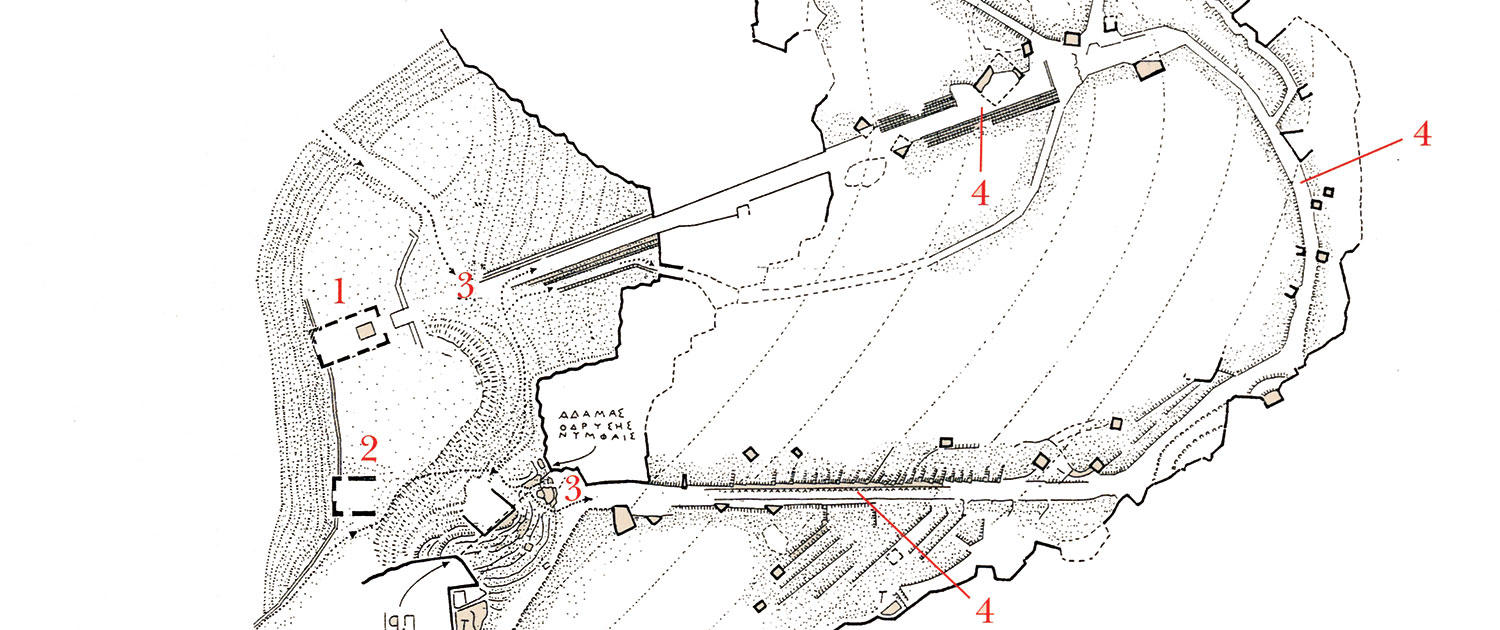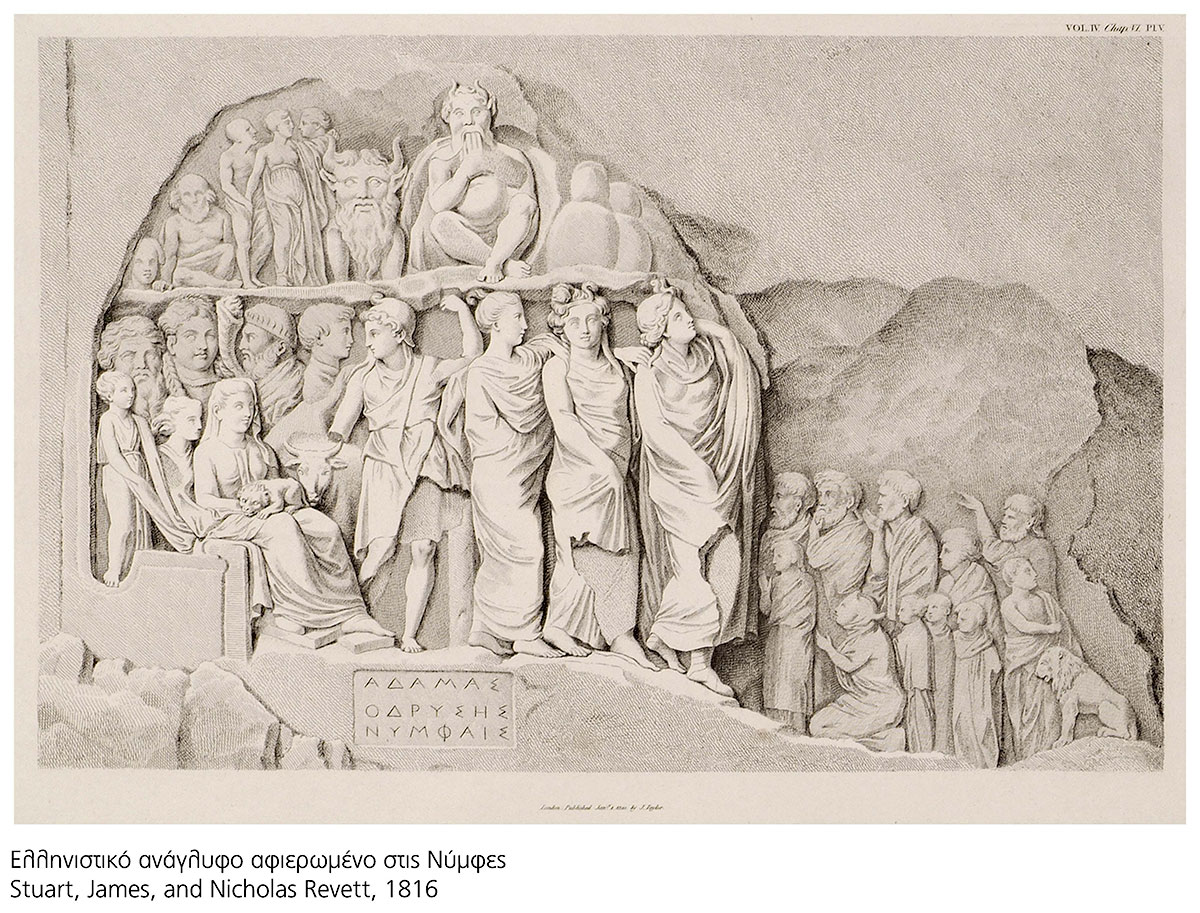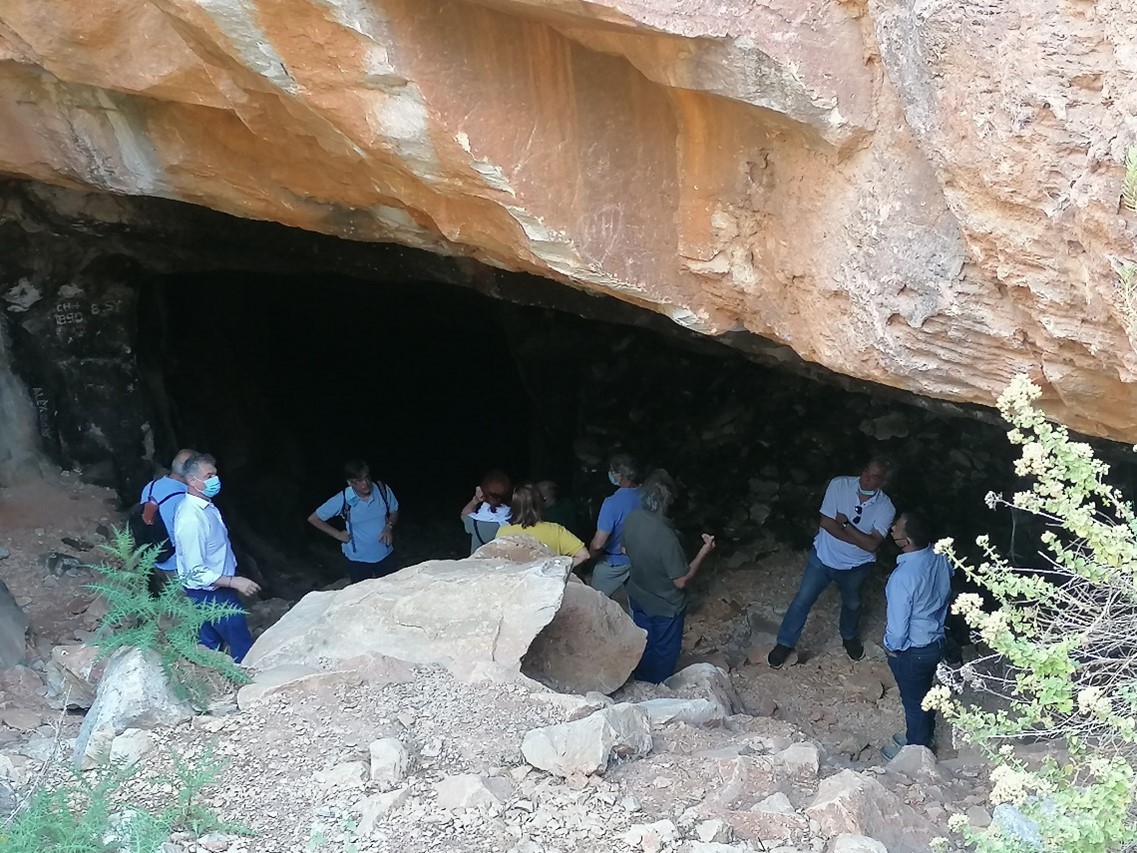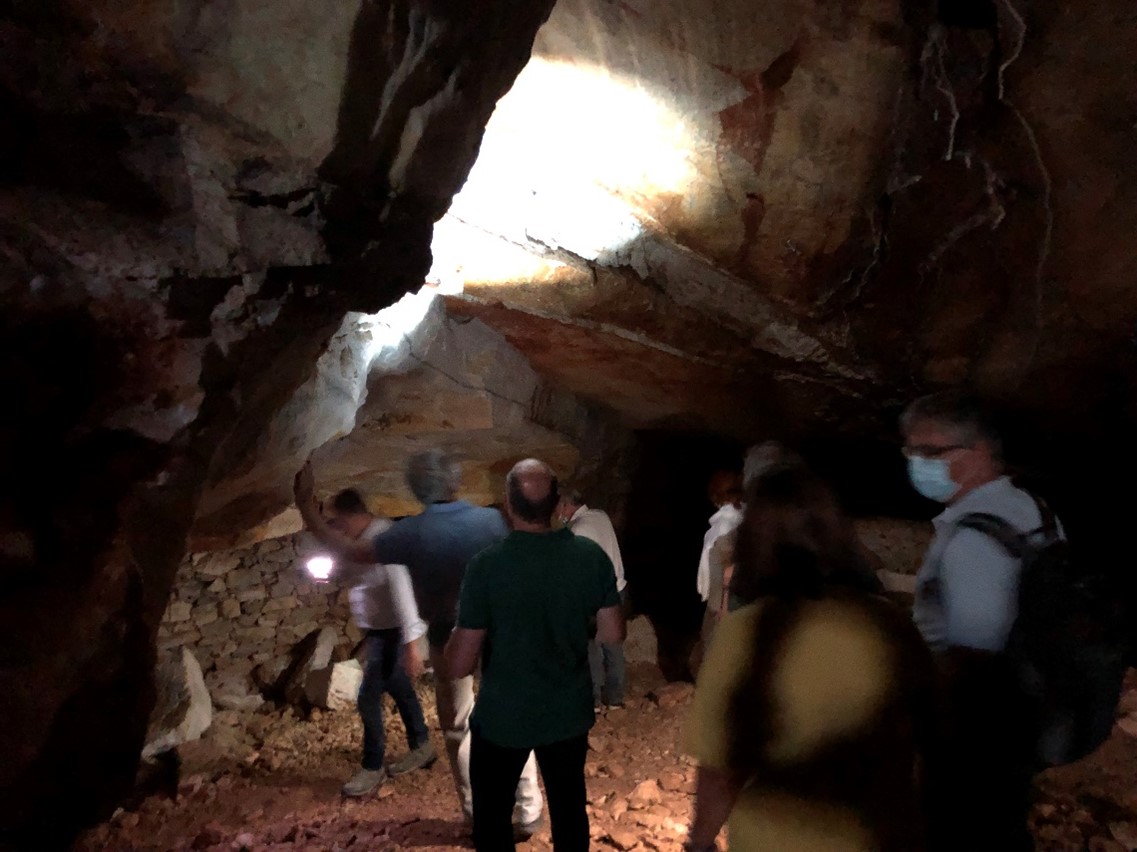Plan of underground galleries at the ancient quarries at Marathi (Μ. Korres).
- Northern Winch Station
- Southern Winch Station
- Gallery Entrance
- Underground Gallery
The Quarry of the Nymphs
The quarry of the Nymphs is the most famous among Marathi’s quarries. It took its name from the votive inscripted relief carved in natural stone on the left side of the south gallery, a tribute of Adamas from Thrace to the Nymphs, a work of the 4th century B.C. The underground space of the quarry has a length of 190 m north to south and a width of 50-120 m, the height reaches up to 3-4m, and there is an overlying mass ranging from 20-100m. In the southern part of the quarry, which is the oldest, the support pillars of unextracted marble are 6-10m apart, while their thickness is shaped according to the thickness of the overlying mass. Of the estimated approximately 100 pillars of the quarry, 20 are now visible, and many are visible through the small gaps in the areas that are backfilled with quarrying debris for safety reasons.
The current state of the quarry of the Nymphs is largely due to the works of the Belgian Company and the Hellenic Marble Company of Paros, who attempted to re-exploit the quarry in the 19th century. At that time, the two main corridors in the northern and southern parts of the quarry were formed, as well as other smaller ones, by removing thousands of cubic metres of ancient chip stones, as well as some ancient support pillars were removed while new strong retaining walls were created. Fortunately, the re-exploitation was finally abandoned; however, thanks to those works, the underground quarry can now be visited to a large extent and is perceived in a way that was not possible even during its ancient phase of operation.
A complex mechanical system, various buildings and a railway line leading to the company’s factory in Parikia, opposite the old pier, where a 20-ton crane was operating, were constructed to lift the material and exploit the quarries. The surviving remains of those facilities are important monuments of industrial architecture of the 19th century.




